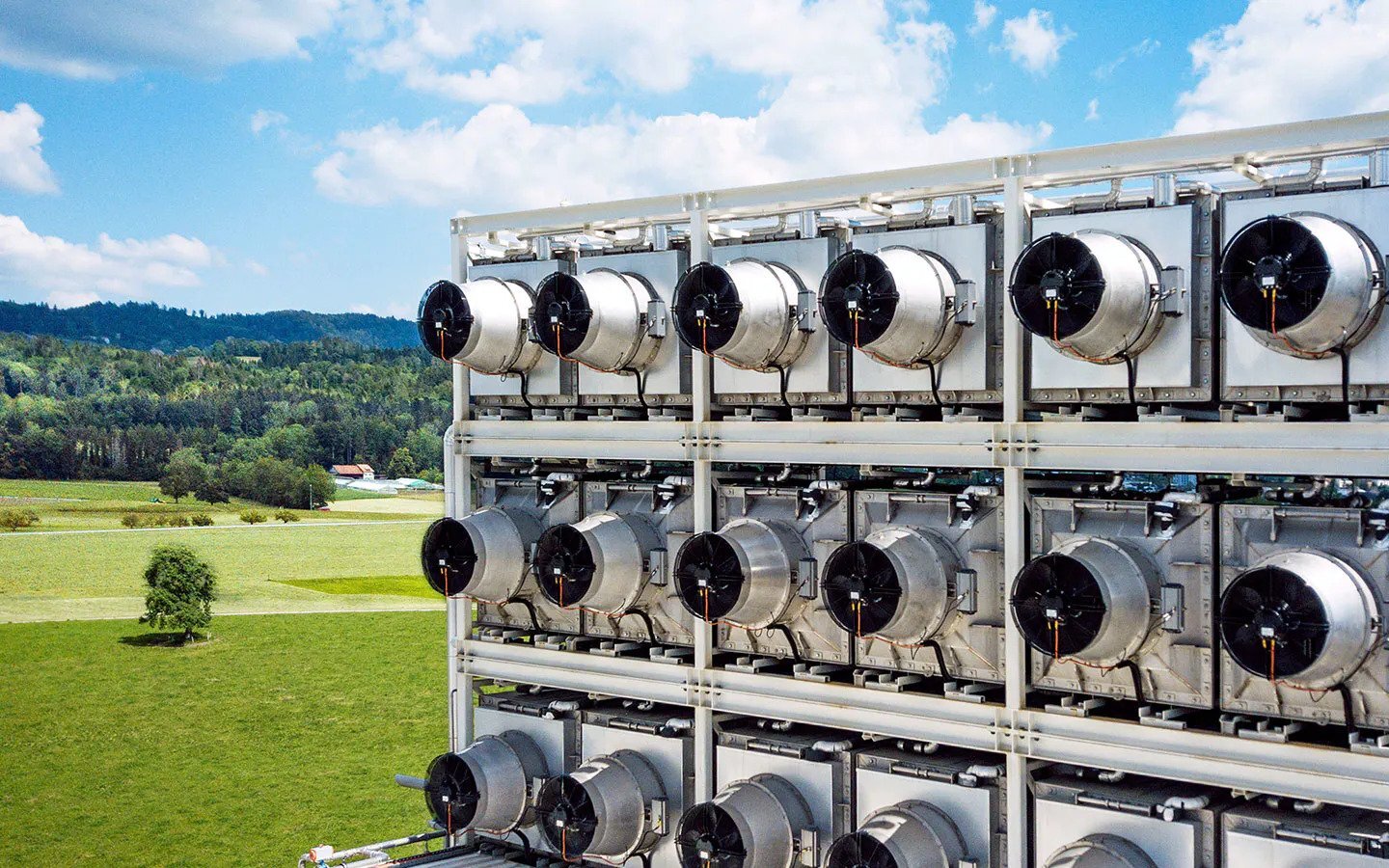Hot Take: Carbon Capture Becomes Big Business
/DAC at the Climeworks plant in Hinwil, Switzerland
The United Nations-backed Intergovernmental Panel on Climate Change estimates that between 100 billion and 1 trillion tons of carbon dioxide needs to be removed from the atmosphere this century to avert the worst effects of climate change. That’s a level far higher than simply planting more trees can be expected to absorb.
As a side-by-side strategy to reducing emissions (and still planting those trees), companies are working on tech to pull carbon OUT of the atmosphere. AKA direct air capture (DAC). These kinds of solutions have long been thought of as too expensive, impractical, and “not enough.”
But as global warming accelerates, with the time to reverse it shrinking, all options are on the table.
The Numbers
A recent Nature Communications study looked at what impact a large-scale emergency DAC program would have on carbon level and warming global temperatures.
The emergency, worldwide DAC initiative studied in the report would be costly: 1.2-1.9% of global GDP annually. At that investment level, DAC is estimated to be able to remove:
2.2-2.3 GtCO2 yr–1 in 2050
13-20 GtCO2 yr–1 in 2075
570-840 GtCO2 cumulatively over 2025-2100
Even at these levels, warming would still reach 2.4-2.5 °C in 2100. But the aforementioned UN study reiterated that carbon dioxide removal is vital to global warming mitigation efforts.
Massive DAC deployment would require a lot of energy—9-14% of global electricity use in 2075. Even with that consideration, and even when paired with power grids that rely on natural gas, the Nature study finds widespread DAC would still be a climate win.
The big lesson of the Nature study? DAC efforts need to ramp up soon. Thankfully, there are companies investing in DAC tech.
The Tech
Early DAC tech has been applied in aerospace and submarine settings—which are small, controlled environments—for decades. Scaling these technologies for global, open-air carbon capture is proving expensive and difficult to scale. But that isn’t stopping some companies.
According to the New York Times, “Occidental Petroleum and United Airlines are investing in a large ‘direct air capture’ plant in Texas that will use fans and chemical agents to scrub carbon dioxide from the sky and inject it underground.”
Occidental Petroleum is working with Carbon Engineering to use direct air capture to offset emissions. This is scheduled to come online by 2025 and expected to remove up to 1 million tons of carbon dioxide annually.
Climeworks is using their direct air capture and storage plant, named Orca, to capture carbon and store it underground, capturing an estimated 4,000 tons of CO₂ per year. Climeworks has more than 50 paying corporate clients, including Audi, and is partnering with Swiss Re on dedicated carbon removal funding.
Project Vesta, which received $250,000 in funding from Stripe, is a nonprofit planning to sprinkle volcanic minerals on beaches to turn carbon dioxide into rock.
Stripe has also invested in carbon storage solutions to help once carbon has been captured. CarbonCure introduces recycled CO₂ into fresh concrete by mineralizing it into calcium carbonate (CaCO3). And Charm Industrial has created a novel process for making carbon storage permanent.
The Money
Scaling up carbon capture technology on a global scale is expensive. The Nature Communications report studied investment levels totaling between $1 trillion and $1.6 trillion initially.
There are working prototypes of carbon capture devices, but for years, investors haven’t been putting money behind the technology. That trend seems to be changing. Stripe and Shopify each committed to spending at least $1 million per year on start-ups working on carbon removal techniques. Microsoft will soon announce detailed plans to pay to remove one million tons of carbon dioxide.
Funding DAC might also have political benefits because it’s not a threat to existing industrial interests. We saw that in December when Congress authorized $447 million to research and demonstrate large-scale carbon removal.
Part of the hesitancy in investment is the cost (in general and per ton) of carbon capture. As technologies scale, we can of course expect per-ton costs to decrease, but it will likely remain expensive in the short term.
Carbon Engineering, the company behind the direct air capture technology at the Occidental Petroleum and United Airlines facility in Texas, thinks it can eventually get prices down to $94 to $232 a ton.
Boston Consulting Group plans to purchase carbon removal to help it reach zero emissions by 2030. But it has set an average price target of $80 per ton, which means they’ll have to rely on cheaper natural solutions initially.
Despite the costs, leaders and researchers agree that scaling carbon capture must start now if there’s any hope of meeting the levels laid out in the Paris Agreement.
The Bigger Picture
Most research supports DAC as an important element in slowing global temperature increases, but it’s not a silver bullet. Slashing emissions—usually easier and cheaper than removing them after the fact—is still the optimal strategy. The Nature report concludes, “Crisis deployment of DAC, even at the extreme of what is technically feasible, is not a substitute for conventional mitigation.”



